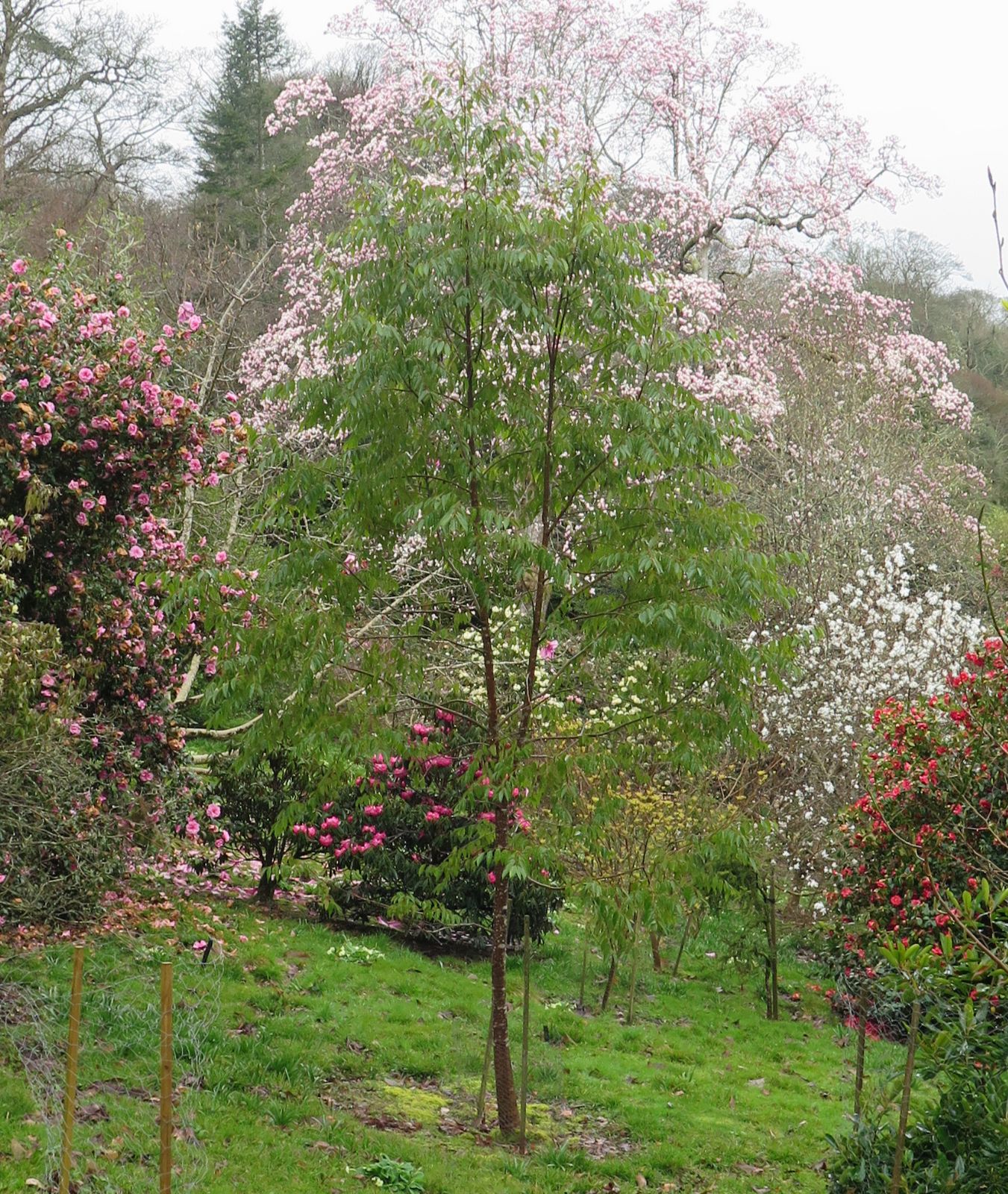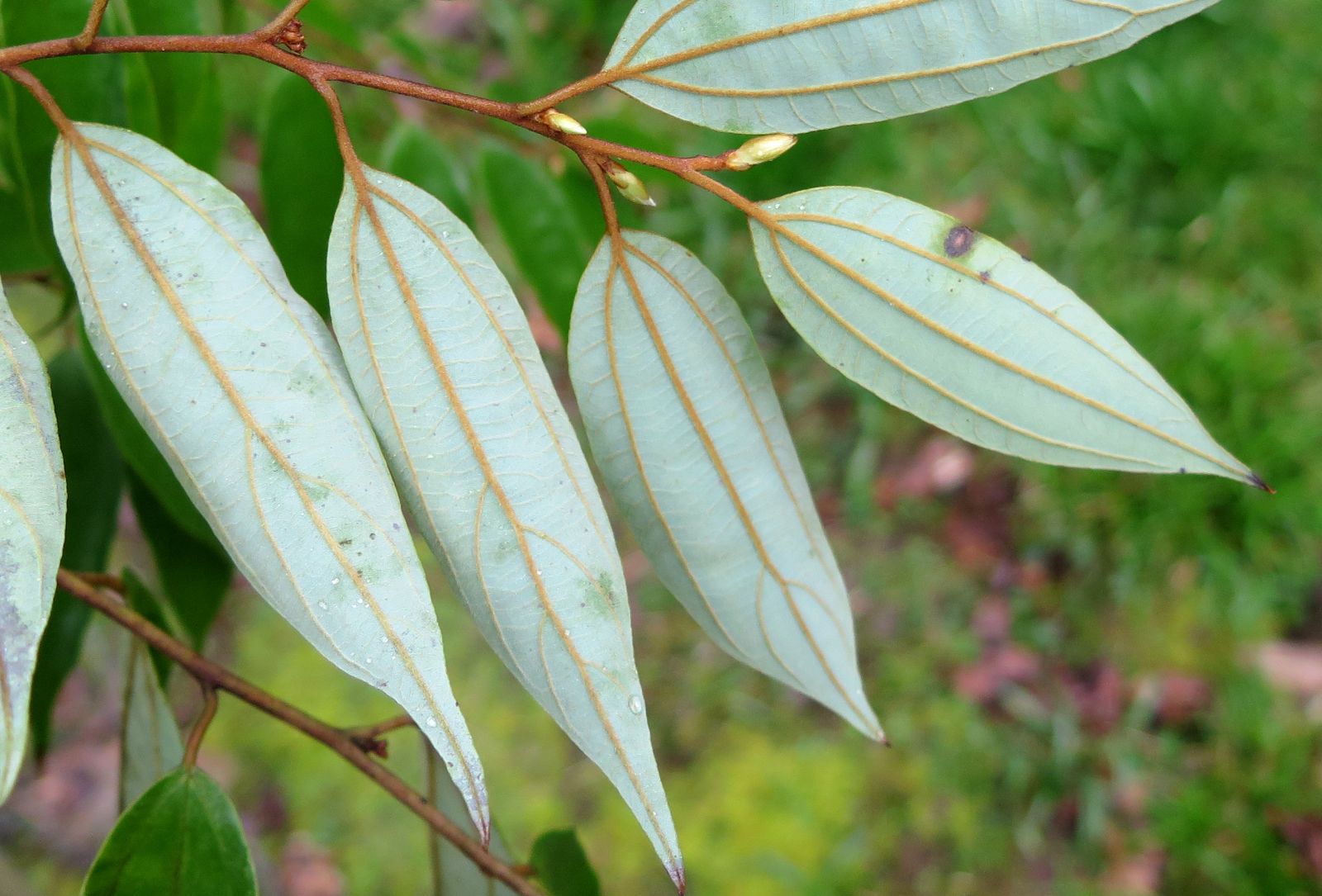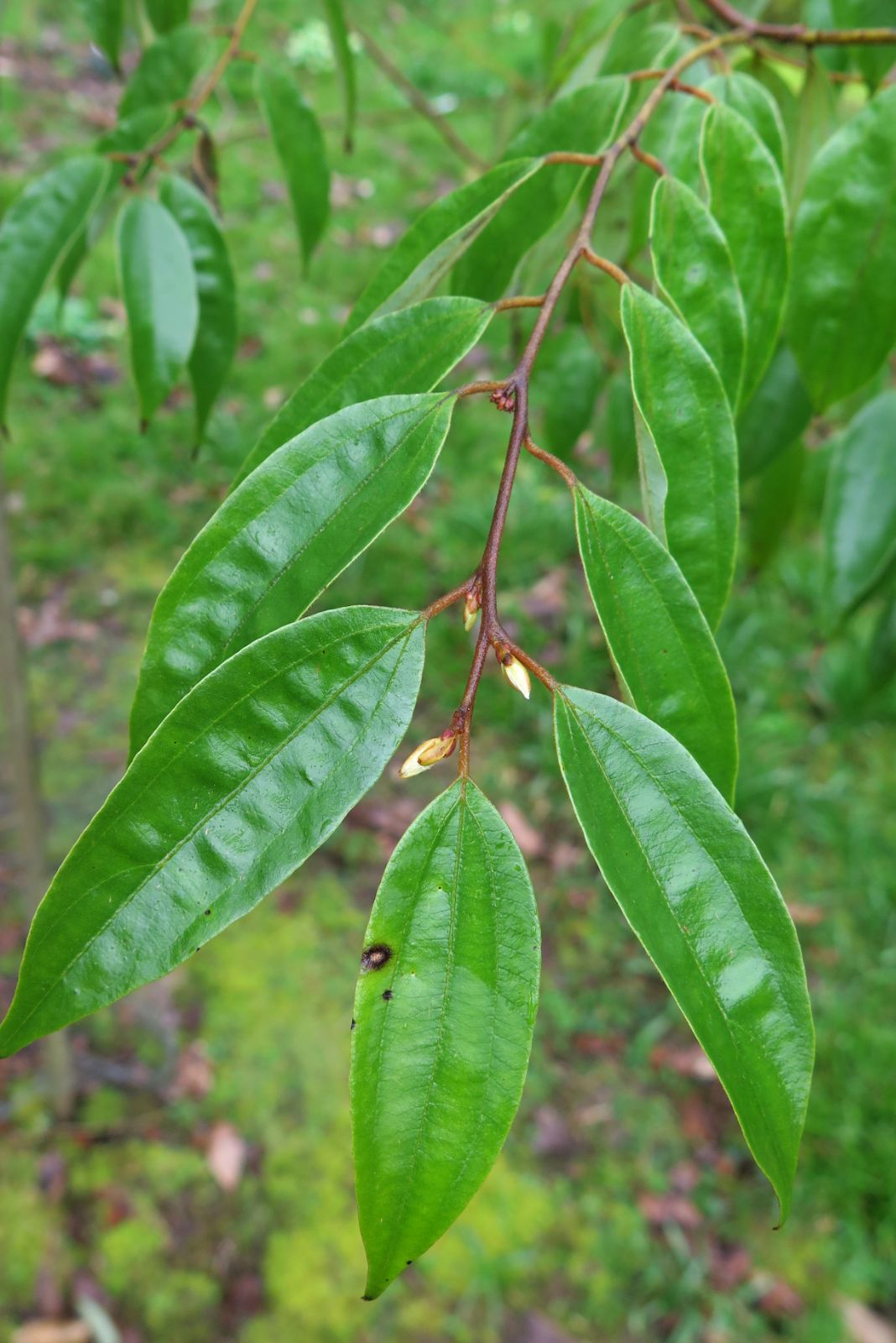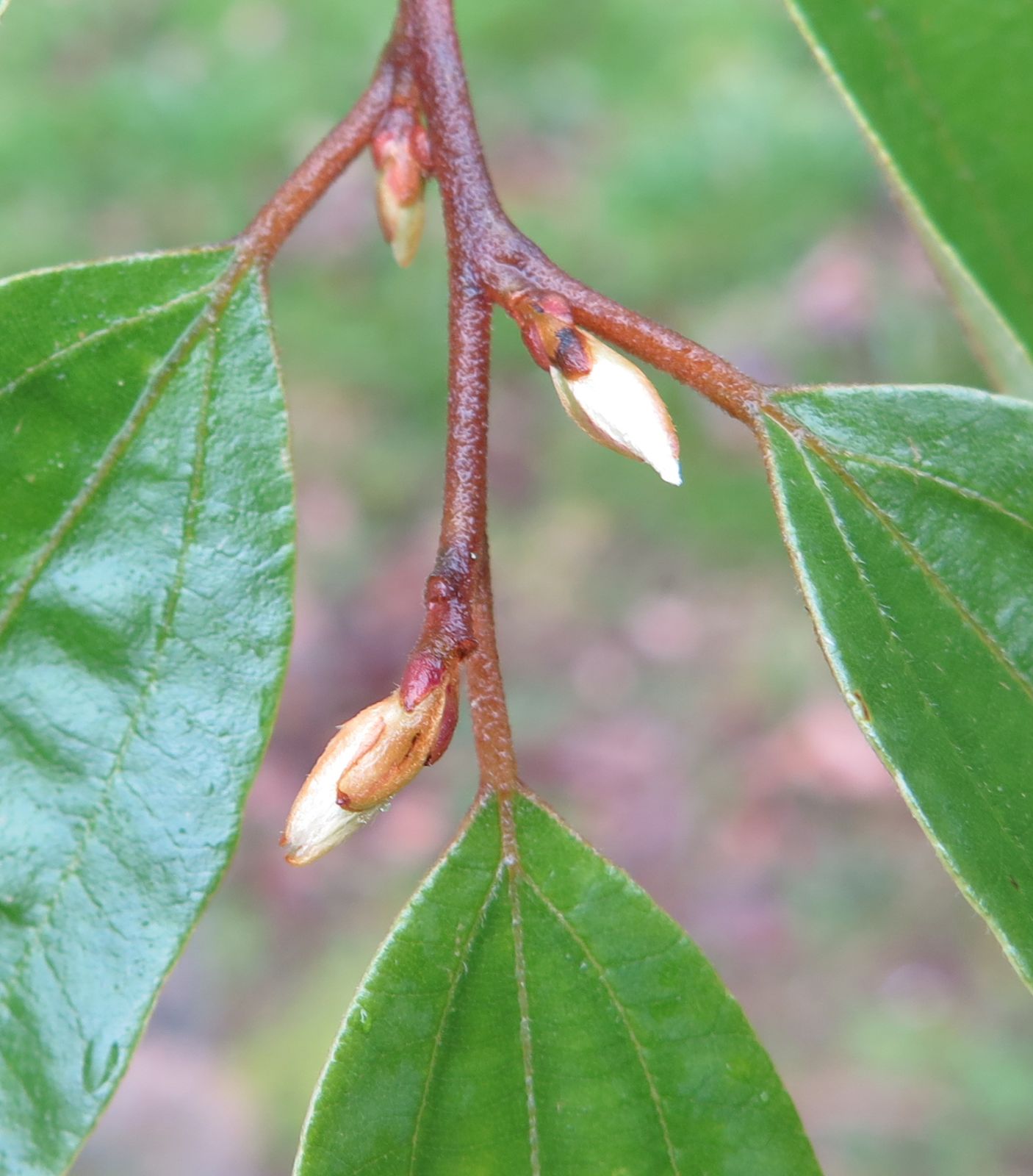Lindera tonkinensis
Sponsor
Kindly sponsored by
a member of the International Dendrology Society
Credits
Julian Sutton (2023)
Recommended citation
Sutton, J. (2023), 'Lindera tonkinensis' from the website Trees and Shrubs Online (treesandshrubsonline.
Genus
Other taxa in genus
- Lindera aggregata
- Lindera akoensis
- Lindera angustifolia
- Lindera assamica
- Lindera benzoin
- Lindera chienii
- Lindera communis
- Lindera erythrocarpa
- Lindera floribunda
- Lindera fragrans
- Lindera glauca
- Lindera megaphylla
- Lindera melissifolia
- Lindera metcalfiana
- Lindera neesiana
- Lindera obtusiloba
- Lindera praecox
- Lindera pulcherrima
- Lindera reflexa
- Lindera rubronervia
- Lindera sericea
- Lindera triloba
- Lindera umbellata
Evergreen tree to 12 m. Young branchlets green, densely brown-hairy to almost glabrous. Leaves trinerved; blade membranous, ovate or ovate-oblong, 8–14 × 2.5–5 cm, sometimes with dense red-brown hairs on the veins of both surfaces when young, becoming confined to the midrib later; base cuneate to almost rounded, asymmetric; margin entire; apex acuminate; petiole 1–1.5(–2) cm, sometimes sparsely hairy. Umbels in groups of 2–5, axillary on short (2–3 mm) branchlets, each umbel with 6 involucral bracts and 6 flowers. Flowers yellowish, tepals 6; male flowers with 9 fertile stamens; female flowers with nine reduced staminodes and a peltate stigma. Fruit ellipsoidal, reddish brown to black, about 0.9 cm acrioss. Flowering October–March, fruiting May–August (China). (Cui & van der Werff 2008).
Distribution China Guangdong, Guangxi, Hainan, S Yunnan Laos Vietnam
Habitat Forests and forest margins; 100–2300 m asl in China.
USDA Hardiness Zone 8-9
RHS Hardiness Rating H4
Conservation status Least concern (LC)
Still garden rarities, trees identified as Lindera tonkinensis from two 21st century Vietnamese collections are proving elegant and upright in milder parts of Britain, and have beautiful foliage. On current showing, it deserves wider planting.
This species belongs to the group with tri- or triplinerved evergreen leaves. Of those we describe, L. fragrans and L. tonkinensis have proportionately narrower leaves, tending towards lanceolate, than L. aggregata, L. floribunda and L. pulcherrima whose leaves are rather more rounded; all have acuminate or caudate apices. In L. tonkinensis any hairs on the young branchlets and leaf undersides are red-brown, rather than white in L. fragrans. In typical L. tonkinensis the umbels of small yellowish flowers are on distinct peduncles at least 5 mm long in the leaf axils, while in L. fragrans they are almost sessile, giving a tighter appearance. The situation is much complicated by the existence of two varieties which differ in these key identification features. The type var. tonkinensis (recorded from Vietnam, Laos and several southern provinces of China) has these pedunculate inflorescences and rufous-hairy young branchlets, leaf undersides, and petioles. However, L. tonkinensis var. subsessilis H.W. Li (N Guangxi, S Yunnan, at higher altitudes than the type variety) has peduncles less than 3 mm long, and almost glabrous young branchlets, leaves, and petioles (Cui & van der Werff 2008; Chinese Academy of Sciences 2023). Given the difficulties of identifying these plants – often even to genus level – it is worth cautioning that Lindera caudata (Nees) J.D. Hooker (= Iteadaphne caudata (Nees) H.W. Li) has strikingly similar leaves (Li, Li & van der Werff 2008; Chinese Academy of Sciences 2023). During the later 20th century, and sometimes still today, that widespread shrub or small tree of warm-temperate East Asian forests has been placed in the easily-overlooked small genus Iteadaphne, although molecular studies now affirm its close relationship to the other trinerved linderas (Liu et al. 2017; Tian, Ye & Song 2019).
L. tonkinensis has uses in line with other evergreen linderas. The seed oil is used for machine lubrication and making soap (Cui & van der Werff 2008), whilst in Lạng Sơn province, Vietnam, the plant has been used to treat rheumatism (Ha & Bach 2023). The species was described scientifically from specimens collected in 1887, in northern Vietnam by Benjamin Balansa, a veteran of plant collecting in regions of French colonial influence (Lecomte 1913). The specific epithet refers to Tonkin, a colonial-era term for a swathe of northern Vietnam.
Two northern Vietnamese collections, both labelled “aff. tonkinensis” and probably representing this species are established in our area, Dan Hinckley’s DJHV 06150 of 2006, and Crûg Farm’s FMWJ 13123 of 2011. In Britain there are examples of the former at Wynkcoombe Hill Arboretum, W Sussex (5 m × 26 cm, 2016) and at Crûg Farm, Gwynedd, both forming single-stemmed trees (The Tree Register 2023). A specimen from the second collection was planted in 2015/2016 at Caerhays Castle, Cornwall (Williams 2023); by March 2023 – in full leaf after a challenging winter – it had formed an small, erect, nicely shaped tree about 4 m tall (pers. obs.). Old leaves on the Caerhays tree observed in March 2023, undamaged at the end of a challenging winter, were glaucescent beneath, the major veins still picked out in rufous hair (pers. obs.): even a companion usually most unimpressed by obscure Lauraceae found them beautiful. Blackhall-Miles (2014) suggests viewing the leaves against a blue summer sky, enthusing that they resemble ‘children’s tissue paper collages, or stained glass, intricate with gingery veins’. Crûg Farm Plants (2013) report it to be winter-flowering in the wild, spring-flowering in North Wales.
The Hinkley collection has had at least some distribution in North America, where it is likely to suit the Pacific seaboard and the Southeast. An accession by University of BC Botanical Garden, Vancouver (Quarryhill Botanical Garden 2023) is no longer in the catalogue, presumably lost (University of British Columbia 2023).




